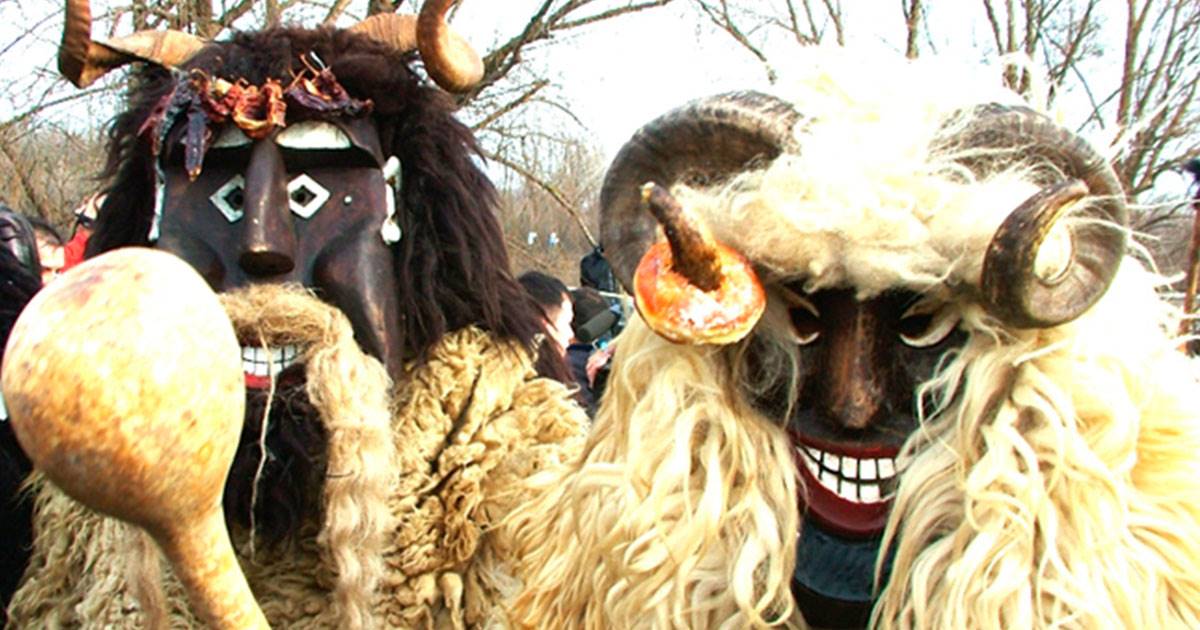One of the many new and exciting experiences available to expats living in Hungary is attending the Busójárás, the annual celebration that bids goodbye to Old Man Winter and welcomes Spring. In 2017, the dates for this event will be February 23 through 28 in the southern Hungarian town of Mohács (Mo-hatch). Each year this amazing spectacle is held at the end of the Carnival season (Farsang), with its final day the day before Ash Wednesday.
The celebration features Busós (people wearing really scary traditional masks) and includes folk music, masquerading, parades and dancing. Busójárás (literally, “Busó-walking” and pronounced ‘boo-sho-yahr-ahsh’) lasts six days and is followed by the Kisfarsang (Little Farsang) carnival, with the biggest celebration, Farsang vasárnap (Farsang Sunday) on the seventh Sunday before Easter Sunday. Whew! The celebration then ends with the Farsangtemetés (the Burial of Farsang) on the following Tuesday (Shrove Tuesday, or Mardi Gras).
The traditional festivity has been inscribed on the Representative List of the Intangible Cultural Heritage of Humanity of the UNESCO in 2009.

According to the most popular legend, people from Mohács fled the town to live in the nearby swamps and woods to avoid Ottoman (Turkish) troops. One night an old man appeared and told the refugees to make scary masks and then go back to the town and make lots of noise, which should result in scaring the Turkish troops away. Apparently the Turks were easily spooked. In an older, less popular story, the busós are scaring away not the Turks, but Winter itself. For anyone interested in the history and traditions surrounding this festival, there is plenty of information on the Internet.
The legendary “busós”
Whatever the legend, this annual celebration brings people from all over Hungary and Croatia to party and to celebrate the end of Old Man Winter with a humungous bonfire, burning a large straw man and saying goodbye to the nasty weather and welcoming spring and fertility back to the world. It’s the oldest festival of its kind in Hungary and traditionally draws about 800 busós in traditional masks and costumes, plus 200 more revelers in other fancy-dress attire.
A good way to spend the final day of the festival is to make a first stop at the battlefield in Mohács, a memorial to the brave Hungarians who were defeated by the Turks in 1526. Hungarians have long memories.
Then continue on to the town of Mohács itself and the End-of-Winter Festival. It’s easy to spend the day following the crowds to the various event sites, like the Crossing of the Danube in Large Ferry Boats, the Sinking of Old Man Winter’s Coffin in the river and, of course, at the very end, the Burning of the Straw Man to say goodbye to Old Man Winter.

Fertility rite – busós gone naughty
The busós will be out in force all day, adults and kids. They circulate among the crowds of people, teaming up on the women and engaging them in a sort of dual hug in which they jump up and down with the poor girl trapped in between them. Some busós carry large wooden phallic symbols around with them, the better to tease the women. Naturally, all of these activities relate to ancient fertility rites, celebrating the coming of spring.
The women (well, most of them, anyway) usually take it in stride – at least the ones who have been there before – and everyone has a jolly old time. To ensure an even better growing season (for crops and babies), the busós also throw flour on the head of some young women, who are, as you might imagine, thrilled to be singled out for such an honor.

You can spend the day strolling and wandering around the town and eating a wide variety of wonderful foods, including sausages, freshly-made mini-donuts, a large, thick tortilla sandwich filled with meat and cheese and sour cream and all sorts of other low-cal goodies. Alcohol is available in quantity, and you can indulge in beer, wine, palinka, more beer, a little more wine and just a touch more beer.
Bonefire and busós – saying goodbye to Old Man Winter
Afterwards, it’s always a great time to join the happy crowd taking pictures of the busós and the bonfire and whatever else you can find that looks interesting. It’s one of those events at which you just can’t stop taking pictures, there’s so much to see and do.
After the sinking of Old Man Winter’s coffin in the middle of the Danube, it’s just a short walk back to the main square where you can have another beer or two and watch as the straw man is set up at the top of the funeral pyre and set ablaze. And does he ever burn! Wonderful. A fitting sendoff to winter – and we can but hope spring is not too far behind.
For the truly adventurous expat, of course, there are plenty of rooms available in Mohács and nearby towns for all or part of the entire celebration. It’s one of Europe’s best festivals and is definitely worth going at least once in your expat life.
Photo source: Gary Lukatch




